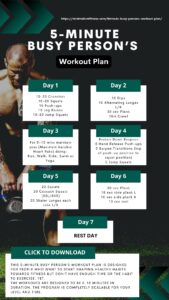To have health from the ground up, we need strong feet and ankles. This is a practical guide for ankles, feet and how you can if you struggle with things like plantar fasciitis, you may even be able to fix your own feet!
Why do we need ankle mobility?
Ankle mobility is often the forgotten element when people want to get faster, stronger or go longer. Combining our sedentary occupations and lifestyles with our want to run a faster marathon time or squat a new PB we often leave ourselves in a state that is not ready to perform.
What causes poor ankle mobility?
There can be many reasons why you struggle with it but here’s a list that might apply to you:
- Previous sprains, strains, injuries to your ankle ligaments and tendons
- Inactivity and ageing
- Structural joint issues/blocks
- Incorrect lifting technique in movements such as your squat
To work out what might apply to you complete the following 4-step guide, don’t forget to check out the videos as well.
Step #1 – Complete this ankle mobility test
What are the standards we need to look for?
- Dorsiflexion: 2-4 inches is acceptable but 4 inches + is optimal
- Plantarflexion: 20-30 degrees is acceptable but 30 degrees + is optimal
Step #2 – How to improve ankle mobility? Let’s look at your results
Below Acceptable Range – If you have tested below the acceptable range for either test you need to prioritise mobility work to see if you can improve your range.
Try things like this foot release and this calf and anterior tibialis release. Remember to retest after each release to assess if they worked or not.
By releasing above and below the joint you are giving yourself the best chance of seeing success.
If you identify an uneven side or “asymmetry” the focus should be on eliminating this as soon as you can because our risk of injury can increase by up to 3.5x. The body will naturally compensate to maintain function and niggles, issues and injuries may present as a result.
If you find the trigger point releases don’t work as well as you’d hoped, try looking for a physical therapist or similar to do some dry needling or deep tissue massage.
Step #3 – How do I increase ankle mobility? Use these ankle mobility stretches
After the trigger point releases, we can use ankle mobility stretches such as our sitting drills. Perform these for 2min each and retest to assess the results.
If you’re struggling to sit in the position for two minutes due to discomfort, take some weight off your ankles by using your arms. Once you’re comfortable, increase the weight as you need.
Step #4 – Use these ankle mobility exercises to increase ROM
Once we have applied the trigger point and sitting drills we can use ankle mobility exercises like our dorsiflexion drill here. This will give us the ability to increase the range of motion and look at the improvements on each side.
Here’s a live example of the process and a client who was suffering from knee pain. Once we applied the right correctives you will see an instant result.
BONUS STEP – Don’t forget about big toe mobility
This video is an oldy but a goodie, it covers an often missed component, big toe mobility. Just like your foot release, other areas can be tight and restricted in the range of motion. By assessing the whole chain of movement patterns you will sometimes find small issues that lead to big problems:
How long does it take to increase ankle mobility?
As you can see, everything is related. When you apply a system like this your progress to improve ankle mobility will be accelerated but everyone is different. Quite often with the right application, we see instant results.
Ankle strengthening exercises and programming tips
When we integrate this type of work back into our training we can also use the following exercise selections to keep us in the gym:
- Use movements that reduce ankle ROM like:
- Split squats
- Lunges
- Use complimentary patterns like:
- Deadlifts
- Kettlebell swings
- Avoid dynamic movements:
- Start with small hops
- Front to back
- Side to side
- Increase only when ready
- Use ankle strengthening exercises like:
- Calf Raises
- Tib Raises
Being the first major joint that interacts with the ground, the ankle should be one of the first points of call and by focusing on the right screening, mobility and exercise selection you will be able to avoid a lot of the common issues and injuries when it comes to activities like:
